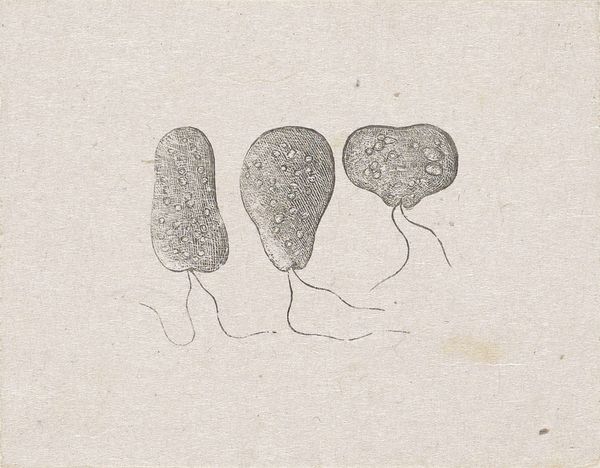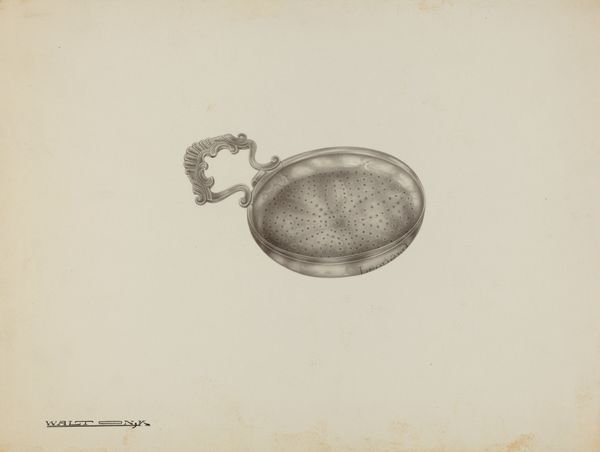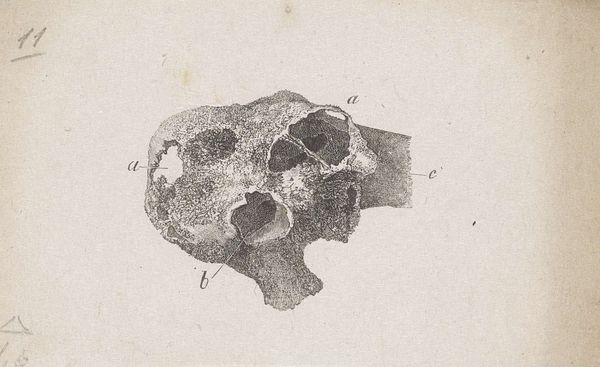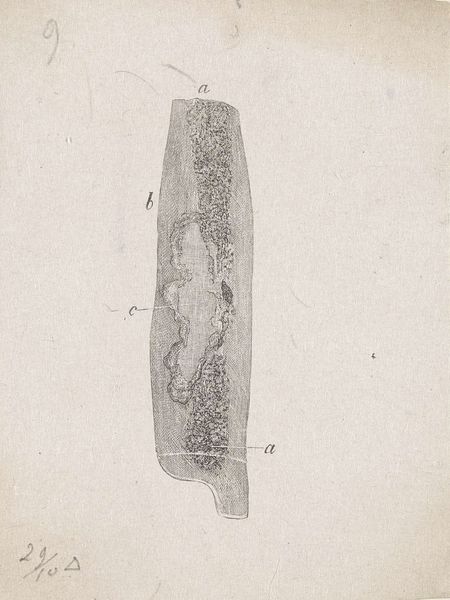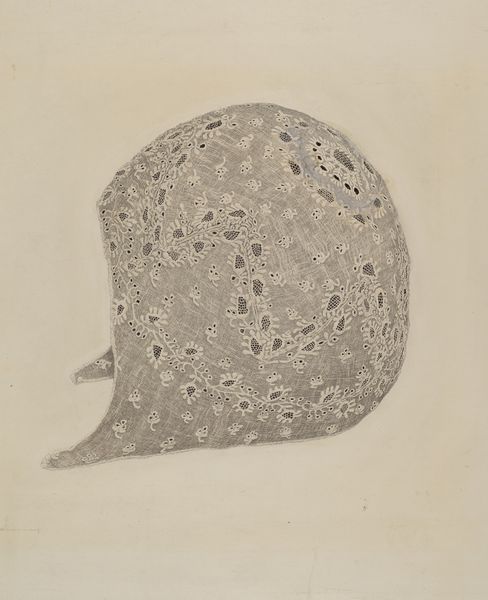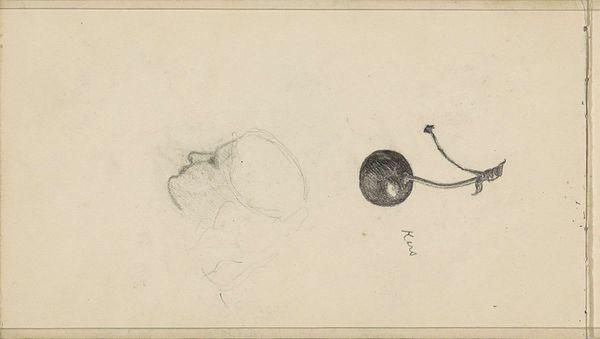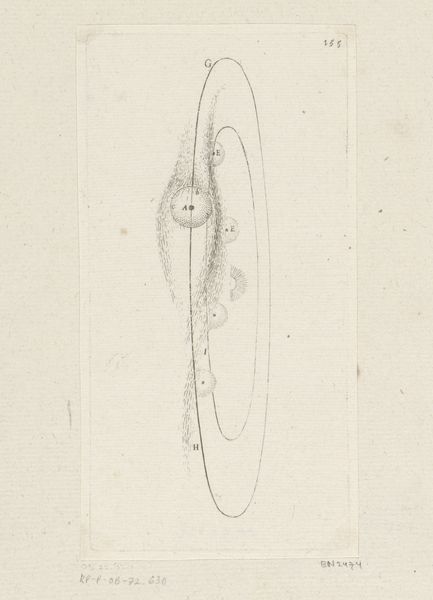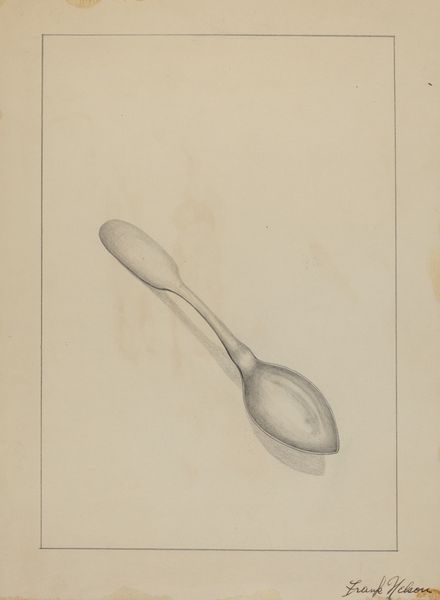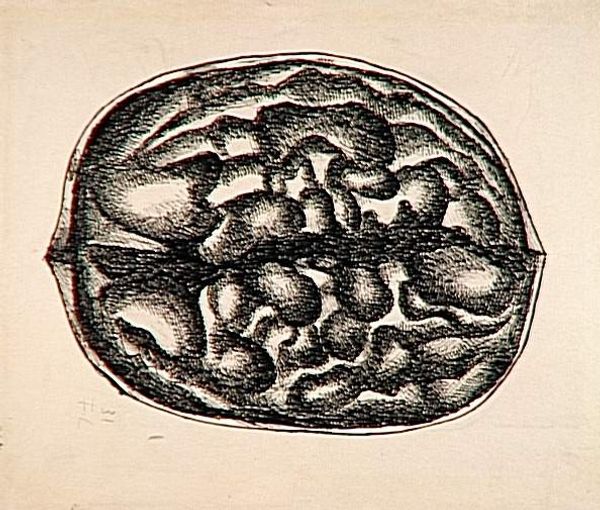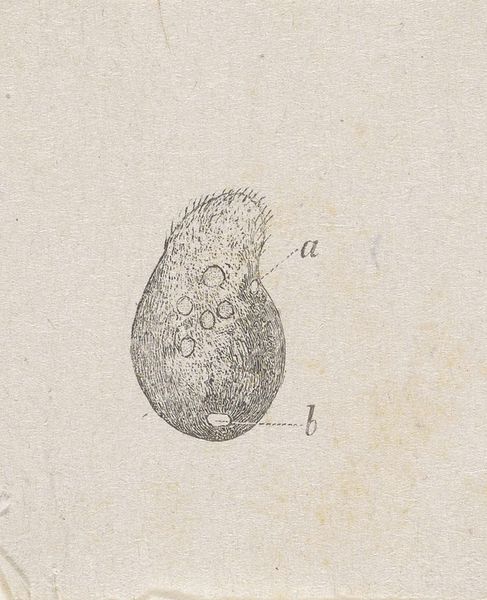
Onderdeel van het menselijk lichaam met een afwijking 1836 - 1912
0:00
0:00
isaacweissenbruch
Rijksmuseum
drawing, paper, ink
#
drawing
#
aged paper
#
light pencil work
#
pencil sketch
#
old engraving style
#
paper
#
personal sketchbook
#
ink
#
geometric
#
ink colored
#
sketchbook drawing
#
pencil work
#
academic-art
#
sketchbook art
#
colour shading
Dimensions: height 41 mm, width 48 mm
Copyright: Rijks Museum: Open Domain
Editor: So, this drawing, “Onderdeel van het menselijk lichaam met een afwijking,” dating from 1836 to 1912, attributed to Isaac Weissenbruch and held at the Rijksmuseum, is rendered in ink on paper. It’s so small and… clinical, almost unsettling. What do you see in this piece? Curator: What I see is an entry point to discussing the history of medical illustration and the objectification inherent within scientific representations of the body, especially bodies deemed ‘deviant.’ Weissenbruch's precise lines and the isolating blank space force us to confront a clinical gaze. Consider how power dynamics intersect with visual representation; whose body is being examined, and who is doing the examining? Editor: That's a powerful point. I hadn't considered the power dynamic involved in depicting what's considered a 'deviation.' Curator: Exactly. This image is not merely an objective record; it reflects societal anxieties about normalcy and the pathologizing of difference. What effect does the geometric rendition have on you? Editor: The rigid, geometric structure makes it even more detached. It feels less human, more like a specimen under glass. The way it's almost floating adds to that sense of isolation. Curator: Precisely. Consider the period this piece originates from; emerging scientific rationalism aimed at categorizing and controlling the human body through ‘objective’ study. Don’t you find its very existence raises questions about medical ethics and our responsibilities when visually representing human subjects, particularly in contexts where difference is pathologized? Editor: Definitely. Looking at it now, I see more than just a scientific drawing. I see a statement, or perhaps an indictment, of how we treat those considered ‘other.’ Thank you for showing how to approach art with social awareness! Curator: The key is understanding that visual culture isn't neutral; art shapes—and is shaped by—power. By interrogating this intersection, we get closer to its role in society.
Comments
No comments
Be the first to comment and join the conversation on the ultimate creative platform.

